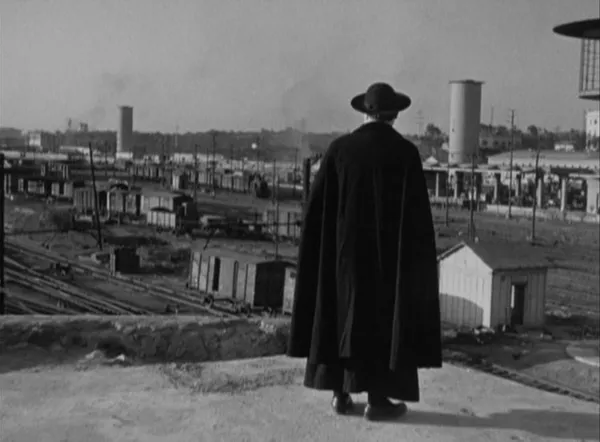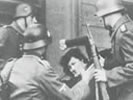Eye For Film >> Movies >> Rome, Open City (1945) Film Review

Roberto Rossellini's masterpiece: the end of the war, the beginning of Neo Realism and a golden age in Italian cinema.
This is the first of a trilogy of films by Rossellini depicting the impact of the war on the Italian people, particularly the poor and impoverished, and with children brought to the foreground. The films that followed were Paisa and Germany Year Zero. Both are excellent, but it is this that stands out, not only as the best of the three, but as Rossellini's masterpiece. Federico Fellini collaborated on the script and the film was nominated for Best Screenplay at the Academy Awards.

In the war-torn Rome of 1943-44, the story revolves around a group of workers and a local priest, Don Pietro (Aldo Fabrizi), who have to endure the final oppression by the German soldiers in what is declared an "open city" by the Nazis. The underground leader Giorgio Manfredi (Marcello Pagliero) hides from the Gestapo in the home of Francesco and Pina (Anna Magnani), whom he is planning to marry. Because the Germans are still looking for Manfredi, he persuades Father Don Pietro to deliver some money to the underground resistance movement.
The film divides into two parts in terms of prevalent moods, those being optimism and despair. Even in times of war, we still look to a hopeful future and many films concerned with war have a melodramatic aspect to them, dealing with the effects of conflict on individuals, families and communities.
The first part sets the story and introduces the different characters; brave children, brave adults, and romance - planning for a future together against the backdrop of apocalypse. Magnani's character is very compelling and exemplifies the bravery of women in war. She seems to lift all around her, becoming a surrogate mother for all. As a result, Manfredi feels an extra rejuvenation in his actions.
In the second part, the realities of the occupation are more apparent. The film is often caught between actuality and melodrama, in an attempt to build a conventional story around what's taking place. This is not detrimental to the whole; in fact, it enhances the suddenness of war. At one moment, all is quiet and calm, then something tragic, or shocking, happens.
Catholicism infuses the scenario, showing how faith can overcome and defeat even the most evil enemy. When confronted by the Nazis, the priest says, "It's not difficult to die well. The difficult thing is to live right."
What is fascinating is that Rossellini filmed it while the Germans were still in Rome. He hid in a worker's apartment to avoid conscription, which adds to the documentary, or autobiographical, elements in the production. Such authenticity makes it a bona fide Neo Realist film, even if Bicycle Thieves (1948) is more accessible to an international audience. While Vittorio de Sica's film depicts the situation for the people after the peace, Rossellini's trilogy precedes it by depicting the fate of many at the end of the war and its aftermath.
Social issues, such as prostitution and lesbianism, are brought out in later scenes. Most poignant is the drunken German officer who reveals he is tired of war, tired of the Gestapo and the inhumane actions for which he is partly responsible. This is a crucial moment and one in which Rossellini draws attention to the fact that not all those who fought for the Third Reich were wicked people. In films made by Allied countries, especially Britain and America, the Nazis were inevitably portrayed as one-dimensional evil characters. Rossellini avoids emotionalism and propaganda and takes a brave stand against easy stereotyping.
Although it is recommended to treat Rossellini's war films as three-in-one, it is not crucial as each is complete in itself, as with Andrzej Wajda's Warsaw trilogy 10 years later. However, like Rome, Open City, they are fascinating to watch now.
The only sad footnote is that Rossellini's masterpiece came so early in his career and he never achieved anything like it again.
Reviewed on: 09 Jul 2005


















